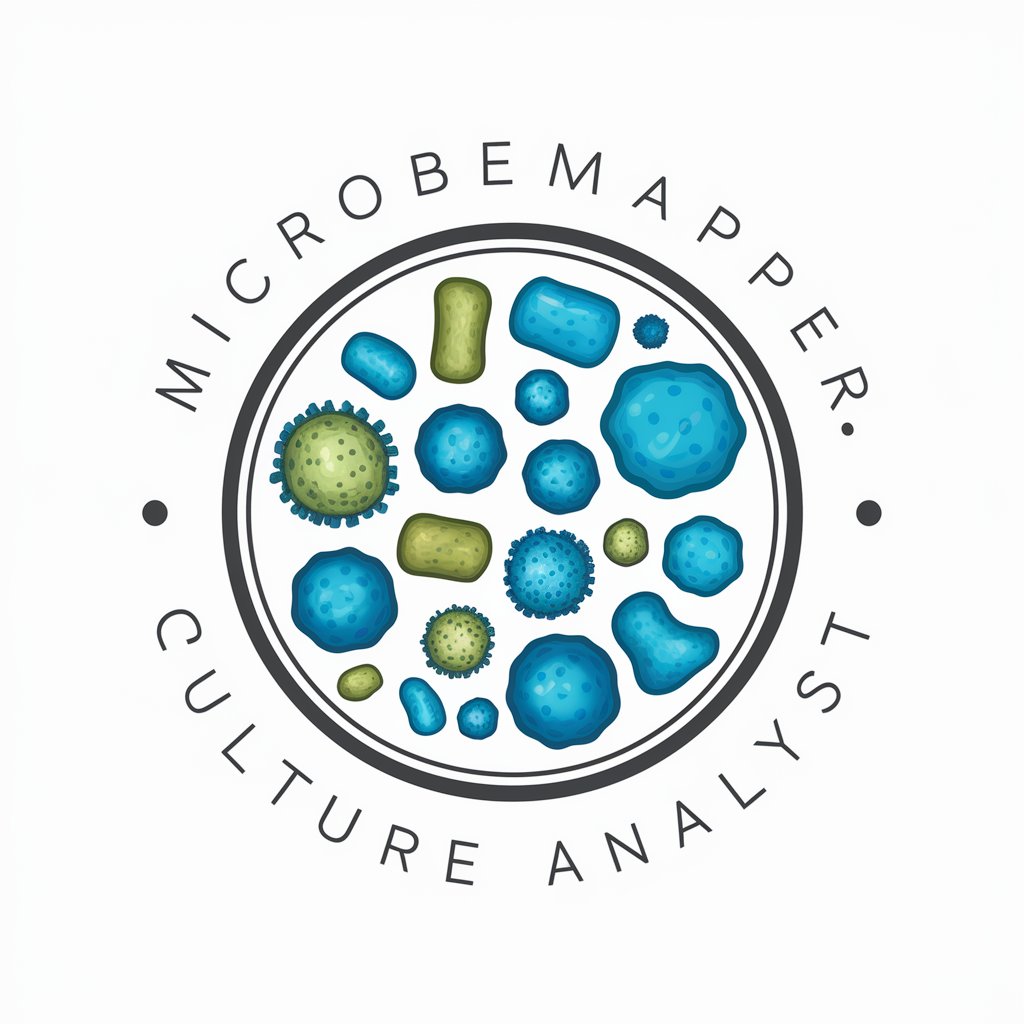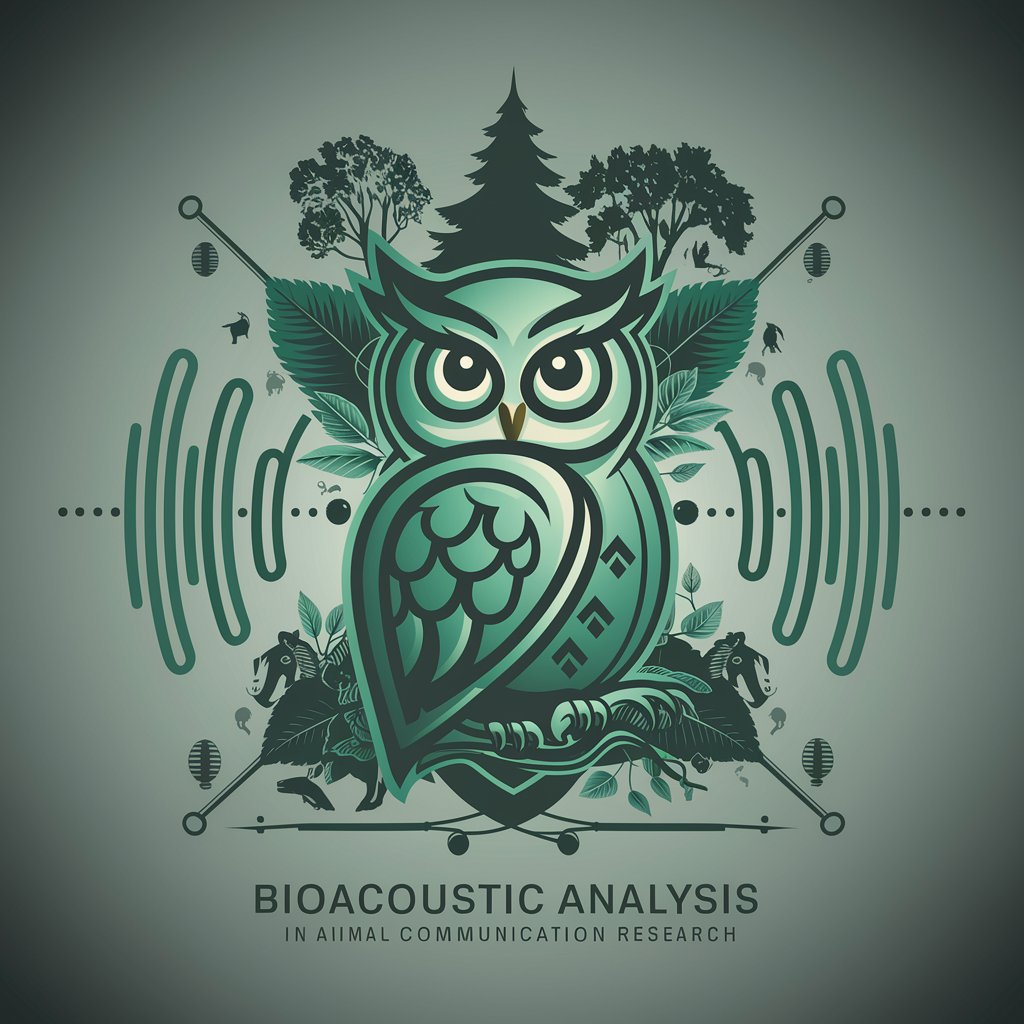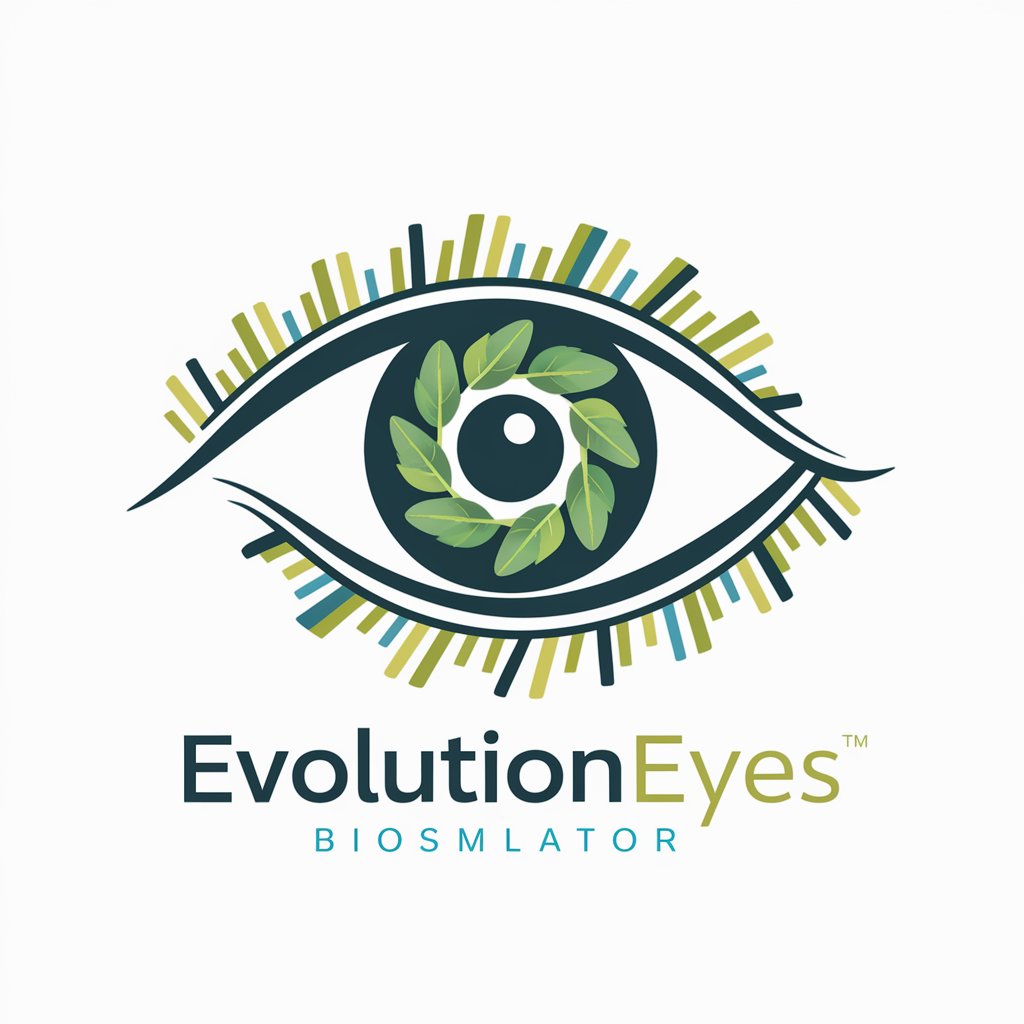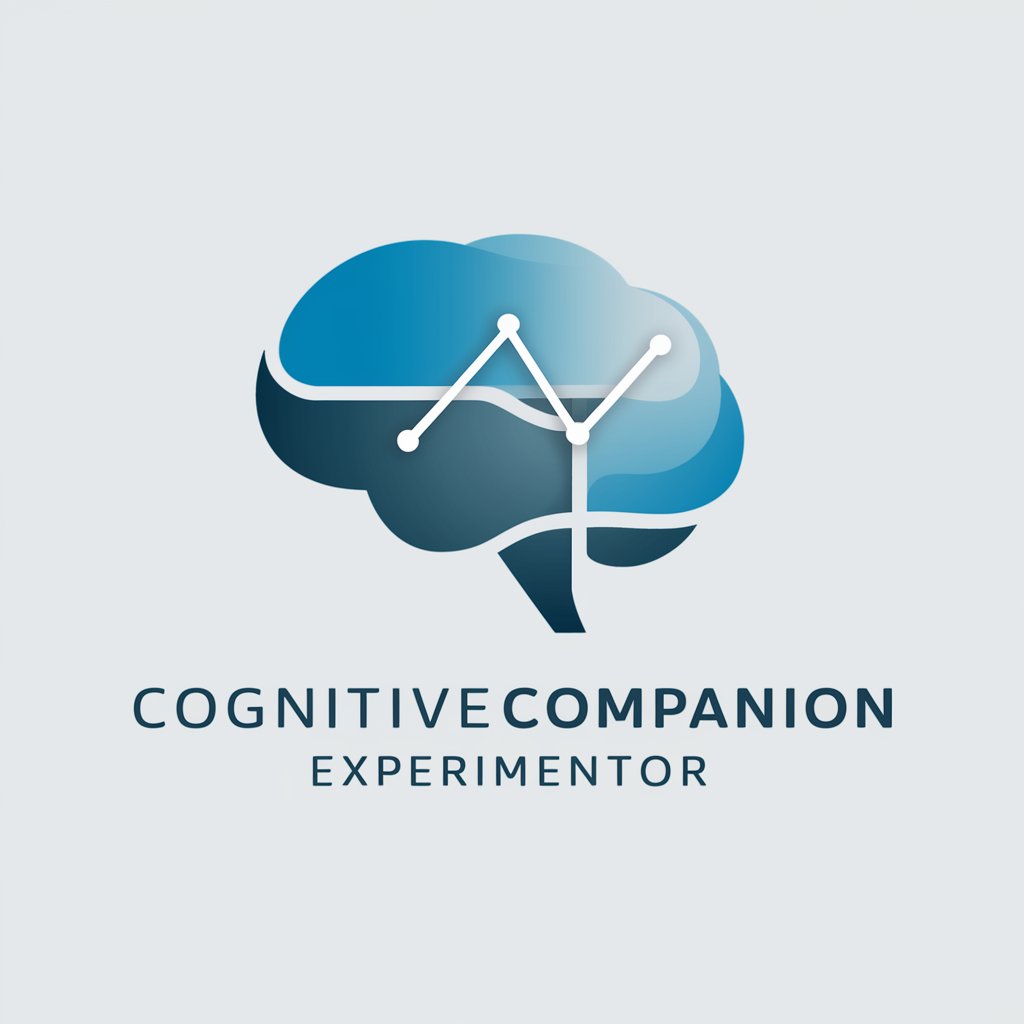
🔬✨ MicrobeMapper: Culture Analyst - Microbial Culture Analysis

Welcome to MicrobeMapper, your go-to source for microbiology insights!
AI-powered Microbial Insight at Your Fingertips
Explain the significance of microbial diversity in...
Compare the growth patterns of different bacterial species in...
Identify potential pathogens in a sample showing...
Describe the symbiotic relationships found in...
Get Embed Code
Introduction to MicrobeMapper: Culture Analyst
MicrobeMapper: Culture Analyst is a specialized AI tool designed to assist with microbiology-related inquiries, particularly focusing on the analysis and interpretation of microbial cultures. This tool is equipped with extensive knowledge about various microorganisms, including bacteria, fungi, and others, alongside their characteristics, growth patterns, and implications of their presence in different environments. The primary purpose of MicrobeMapper is to help users identify potential pathogens, understand symbiotic relationships among microorganisms, and compare microbial communities across different samples. It uses up-to-date research, image generation for educational purposes, and code execution for data analysis to support a wide range of microbiology-related tasks. An example of its application could be in identifying the type of bacteria present in a water sample based on its growth characteristics on a petri dish, helping researchers or educators to illustrate or investigate microbial diversity and health implications. Powered by ChatGPT-4o。

Main Functions of MicrobeMapper: Culture Analyst
Microbial Identification
Example
Identifying E. coli in a contaminated water sample.
Scenario
A public health researcher collects water samples from different locations to test for contamination. Using MicrobeMapper, they input growth patterns, colony morphology, and other observable characteristics from culture plates. The tool analyzes the data, identifies the presence of E. coli, and provides detailed information about its implications for water safety and public health.
Analysis of Symbiotic Relationships
Example
Studying the symbiotic relationship between Rhizobium bacteria and leguminous plants.
Scenario
An agricultural scientist is researching ways to enhance crop yield through natural processes. By entering data on root nodule formations and bacterial characteristics into MicrobeMapper, they obtain an in-depth analysis of the symbiotic relationship between Rhizobium bacteria and legumes, leading to insights on optimizing nitrogen fixation and improving soil fertility.
Comparative Analysis of Microbial Communities
Example
Comparing gut microbiota in healthy versus diseased individuals.
Scenario
A medical researcher is investigating the role of gut microbiota in digestive health. They use MicrobeMapper to compare the microbial communities present in samples from healthy individuals against those with specific gastrointestinal disorders. The tool facilitates the identification of microbial composition differences, contributing to the understanding of microbial roles in health and disease.
Ideal Users of MicrobeMapper: Culture Analyst Services
Educators and Students
MicrobeMapper serves as a powerful educational tool for teachers and students in microbiology, providing a visual and analytical platform to study microorganisms, their growth patterns, and their impact on the environment and human health. It enhances learning by offering real-world examples and interactive analysis.
Researchers and Public Health Officials
For researchers investigating microbial communities and public health officials monitoring disease outbreaks, MicrobeMapper offers a precise, data-driven approach to identifying pathogens, understanding their spread, and analyzing their effects on human and environmental health.
Agricultural Scientists
Agricultural scientists benefit from using MicrobeMapper to study the symbiotic relationships between soil microbes and plants, which can lead to the development of more sustainable farming practices and the enhancement of crop yields through natural processes.

How to Use MicrobeMapper: Culture Analyst
1
Begin your journey at yeschat.ai for an introductory experience without the need for registration or ChatGPT Plus subscription.
2
Choose the MicrobeMapper: Culture Analyst tool from the available options to start your microbiology analysis.
3
Input your query related to microbiology, such as identifying bacteria, understanding growth patterns, or analyzing microbial cultures.
4
Utilize the tool's browsing capability for up-to-date research or request image generation for a visual understanding of microbial cultures.
5
For complex analyses, leverage the code running feature to process and interpret microbiological data effectively.
Try other advanced and practical GPTs
🦁🌍 ZoologyZone Tracker 🐾🔍
Unlock Nature's Secrets with AI

🌞 SolarSolver Pro Energy Lab 🔋
Powering Your Solar Projects with AI

🌐👥 EthnoEngine for Study Management
Streamlining Research with AI

🔊🐾 EcoAcoustic Analyst Pro 🍃🎙️
Decipher Nature's Codes with AI

🔮 CrystalCalculator: Solid-State Pro 🧬
AI-Powered Crystallography Insights

🧬 EvolutionEyes: BioSimulator 🌿
Simulating Life's Complexities, AI-Powered Insights

🔬Subatomic Sleuth Explorer👨🔬
Unlocking the mysteries of the quantum world.

🌿🐾 Wildlife Stewardship Guide 🦉🐋
Empowering conservation with AI

🧠 CognitiveCompanion Experimentor🔬
Empower Research with AI

🌐🗺️ GeoGrapher Expert Navigator
Mapping the Future with AI

🔬🍏 NutriNet Science Researcher 📊
Empowering Nutrition Science with AI

🔍📈 TechTrendTracker
Stay Ahead with AI-Driven Tech Insights

FAQs about MicrobeMapper: Culture Analyst
What can MicrobeMapper analyze?
MicrobeMapper is designed to analyze and interpret microbial cultures, identify potential pathogens, understand symbiotic relationships, and compare microbial communities in various samples.
Can MicrobeMapper generate images of microbial cultures?
Yes, it can generate detailed images of microbial cultures for educational purposes, aiding in the visual understanding of different microorganisms.
How does MicrobeMapper support academic research?
It provides access to the latest research, supports data analysis through code execution, and helps in the identification and comparison of microbial communities in research samples.
Is MicrobeMapper useful for professionals in the field?
Absolutely, professionals in microbiology and related fields can use MicrobeMapper for analyzing samples, validating research findings, and accessing up-to-date microbial databases.
Can students use MicrobeMapper for learning?
Definitely, students can leverage MicrobeMapper to understand microbial cultures, study growth patterns, and use it as a supplementary tool for microbiology courses.